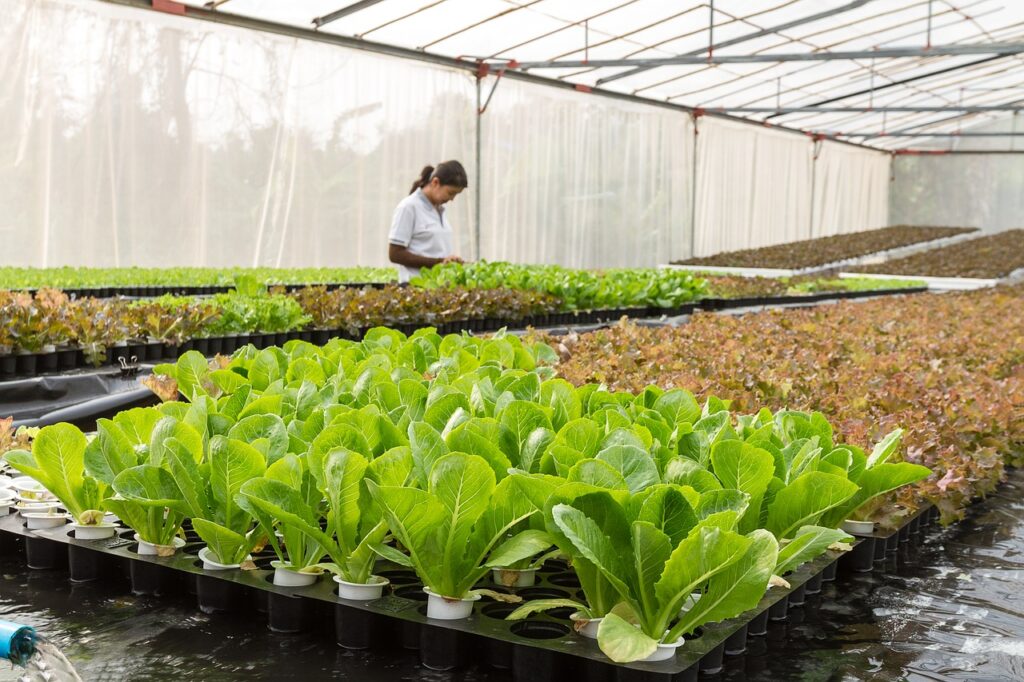The global horticulture film market is valued at US$ 10.89 Billion as of now and is expected to reach US$ 19.55 Billion by the year 2032 at a CAGR of 6.2% between 2022 and 2032.
The market for tool boxes is expected to expand in the Asia Pacific area due to rising investments in the building industry in nations like China and India. One important aspect is the increasing number of construction workers in conjunction with the growing demand for residential constructions. Additionally, the significant financial resources that the Indian government has set aside for the development of infrastructure, along with a sizeable portion of FDI inflows into infrastructure projects, are anticipated to maintain and accelerate the market’s upward trend in the Asia Pacific tool box market.
The global population is expected to cross 8 Bn by the year 2030. This would result in increase in demand for food as well. This would exert pressure on farm produce. The techniques employed for increasing production include controlled agriculture and adoption of greenhouse films by minimization of soil erosion, subverting weeds, and likewise.

Request a Sample of this Report:
https://www.futuremarketinsights.com/reports/sample/rep-gb-9647
In addition, greenhouse films are being made with additional features like UV protection, NIR blocking, and so forth. Indeed, the UV-blocking coatings shield plants from pests and illnesses. NIR blocking films do block radiation along with stimulating growth of plants. Then there are fluorescent films that let only spectrum radiation of 300 – 700 nm to enter the greenhouse. The other technological advancements include drip farming, soil fumigation, and ventilation to the crops.
at the same time, the fact that installation costs are high can’t be ignored. The developing countries would certainly be thinking twice before going for horticulture films.
The internet has spread widely over the past ten years, which has led to an increase in e-commerce worldwide. As a result, a wide range of packaging choices are entering the agricultural packaging industry. The good news is that horticulture films can be used to control weed growth and soil temperature.
The most recent market research from Future Market Insights, titled “Horticulture Film Market,” walks through these data with insights. Using a bottom-up methodology, the team of analysts and consultants aims to shed light on the various aspects through primary, secondary, and tertiary ways of study.
“With rising demand for greenhouse-cultivated crops, the global horticulture film market is slated to grow on a splendid note in the years to come”, says an analyst from Future Market Insights.
Key Takeaways from Horticulture Film Market:
- Europe holds more than 25% of the market share.
- North America holds more than 12% of the market share and, along with Europe, would continue to remain the same even going forward. This could be credited to horticulture films being increasingly adopted all across.
- The Asia-Pacific holds more than 40% of the market share. This could be attributed to the region being home to agrarian economies.
Seize the Opportunity: Get Report Now for a Thorough Report
https://www.futuremarketinsights.com/checkout/9647
Competitive Films:
- BASF SE has tabled new films designed for mulching and do have light stabilizers that render protection against solar radiation and agrochemicals. It’s polymer ‘ecovioM’ does contain bio-based components and is biodegradable in its entirety. As such, farmers need not collect horticulture films post-harvest. They can, instead, plough them on direct basis into ground; which does save on money as well as time.
- Plastika Kritis, in July 2019, did develop novel EVO AC films. They comprise 8 layers that are based on nanomaterials; with the long-lasting anti-dripping effect. They do end up having a much better performance as compared to the other films wherein additives get slowly depleted within the time-span of 1-2 years.
- CNH Industrial N.V., in November 2021, did acquire Raven Industries, Inc. to expand its offerings pertaining to agriculture technology, aerospace and defense services, and high-performance specialty films.
- Exxon Mobil Corporation, in June 0200, did introduce metallocene linear low-density polyethylene (mLLDPE) high-performance flexible films for agricultural, packaging, and industrial applications; thereby rejuvenating flexible packaging film vertical.
What does the Report look through?
- The research study is based on product type (mulch films, greenhouse films, and ventilated stretch films), by material (polyethylene, polypropylene, PVC, PLA, and the other kinds of plastics), and by application (greenhouse film and silage).
- With need to have competitive and convenient packaging to safeguard crop yield, the global horticulture film market is expected to grow on an exponential note growing forward.
About Future Market Insights Inc. (FMI)
Future Market Insights, Inc. (ESOMAR certified, recipient of the Stevie Award, and a member of the Greater New York Chamber of Commerce) offers profound insights into the driving factors that are boosting demand in the market. FMI stands as the leading global provider of market intelligence, advisory services, consulting, and events for the Packaging, Food and Beverage, Consumer Technology, Healthcare, Industrial, and Chemicals markets. With a vast team of over 400 analysts worldwide, FMI provides global, regional, and local expertise on diverse domains and industry trends across more than 110 countries.
Contact Us:
Future Market Insights Inc.
Christiana Corporate, 200 Continental Drive,
Suite 401, Newark, Delaware – 19713, USA
T: +1-845-579-5705
For Sales Enquiries: sales@futuremarketinsights.com
Website: https://www.futuremarketinsights.com
LinkedIn| Twitter| Blogs | YouTube
